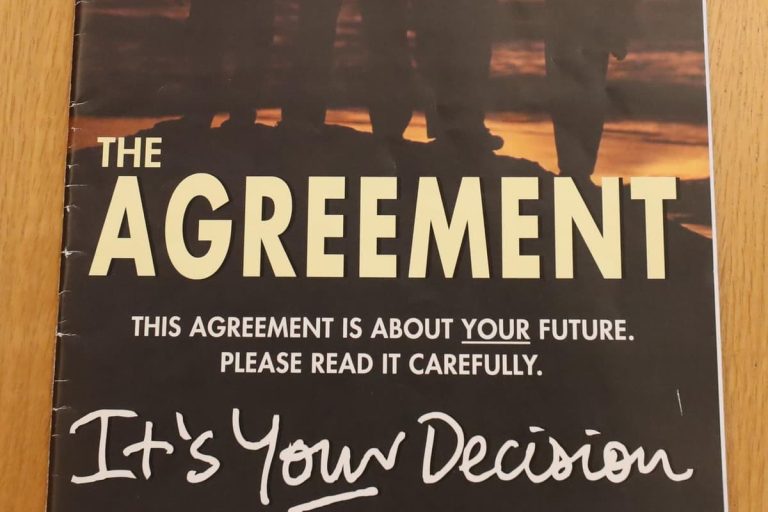The Propaganda War That Fueled the Troubles: A Legacy of Deceit and Distortion
The legacy of the Troubles in Northern Ireland remains a contentious and complex issue, with the Belfast/Good Friday Agreement failing to adequately address the pervasive role of propaganda in shaping the conflict. This article argues that the Provisional Irish Republican Army (PIRA) and its political wing, Provisional Sinn Féin, masterfully manipulated the media and public perception to legitimize their violence and advance their political agenda. This manipulation, which continues to this day, has distorted the historical narrative and created an environment where former security forces face disproportionate scrutiny while perpetrators of violence are lauded as peacemakers.
The Troubles, ignited in 1969, marked a departure from the republicanism of figures like Michael Collins. Instead, the PIRA, influenced by figures like Nazi-sympathizer Seán Russell, embraced a strategy of violence and propaganda. Led by figures like Ruraí Ó Brádaigh, they disseminated the “big lie”: the claim that violence was the only means to achieve their political goals. This narrative, presented as a sacred mission rooted in “Údaras na staire” (Authority of history), justified their campaign of “armed struggle,” a euphemism for bombings, assassinations, and sectarian violence. This propaganda effectively recruited impressionable Catholic youths, drawing them into a cycle of violence against their Protestant neighbors under the guise of a just cause.
As the promised quick victory failed to materialize, the PIRA shifted to a “long war” strategy, predicated on sustained violence over decades. This strategy, outlined in a document discovered on a senior PIRA member, explicitly highlighted the critical role of “propaganda and publicity” controlled by the “Provisional Army Council.” This propaganda apparatus, overseen by individuals like Ó Brádaigh, aimed to mask the fundamental truth: the PIRA itself was responsible for the violence that plagued Northern Ireland. This deliberate obfuscation served to deflect responsibility and legitimize their actions in the eyes of both local communities and international observers.
The PIRA’s propaganda campaign extended beyond justifying their existence. They employed carefully crafted language to dehumanize their victims and sanitize their brutal acts. The term “legitimate target” served to excuse the murder of not only British security forces but also their families. The PIRA also ruthlessly enforced its internal code of conduct, executing alleged informers based on “General Order No 1,” a document that equated informing with treason. This resulted in the deaths of approximately 100 individuals, many of whom were innocent, their bodies often dumped in public as a gruesome form of psychological warfare.
The PIRA’s propaganda strategy also involved deliberately provoking loyalist paramilitaries to retaliate. This created a cycle of violence which the PIRA then exploited to present themselves as victims of sectarian conflict, rather than the primary instigators. They skillfully disseminated misinformation to downplay the stark disparity in the number of killings, which at its peak in 1985 reached a ratio of 10 PIRA killings for every one loyalist killing. This manipulation effectively blurred the lines of responsibility and diverted attention from the PIRA’s disproportionate role in the bloodshed. Gerry Adams, who consistently denied PIRA membership despite his influential role in shaping the organization’s propaganda strategy, presided over this period of intense disinformation and manipulation.
The Belfast/Good Friday Agreement, hailed as a landmark achievement in peacemaking, neglected the insidious role of propaganda in perpetuating the conflict. This oversight has led to a biased historical narrative that unfairly targets former security forces while failing to hold PIRA leaders accountable for their crimes. Figures like Adams, despite their central role in orchestrating violence and disseminating propaganda, have been presented as peacemakers. This flawed narrative is further reinforced by instances such as Adams’ eulogy at the funeral of Kevin McKenna, a notorious PIRA commander, where he reiterated the false narrative of “no alternative” to violence. The Agreement’s failure to compel figures like McKenna and Adams to acknowledge the wrongfulness of their actions and express remorse has allowed the PIRA’s propaganda narrative to persist.
The propaganda war, far from ending with the Good Friday Agreement, continues to shape perceptions of the Troubles. The media, often failing to challenge the dominant narrative, contributes to this ongoing distortion. Those who dare to question this narrative risk being labelled as opponents of peace and reconciliation. This chilling effect stifles open and honest discussion about the past, perpetuating a cycle of misinformation and hindering genuine reconciliation. The ongoing propaganda war requires critical examination and a commitment to uncovering the truth, regardless of how uncomfortable it may be. Only then can a truly just and lasting peace be achieved in Northern Ireland.


